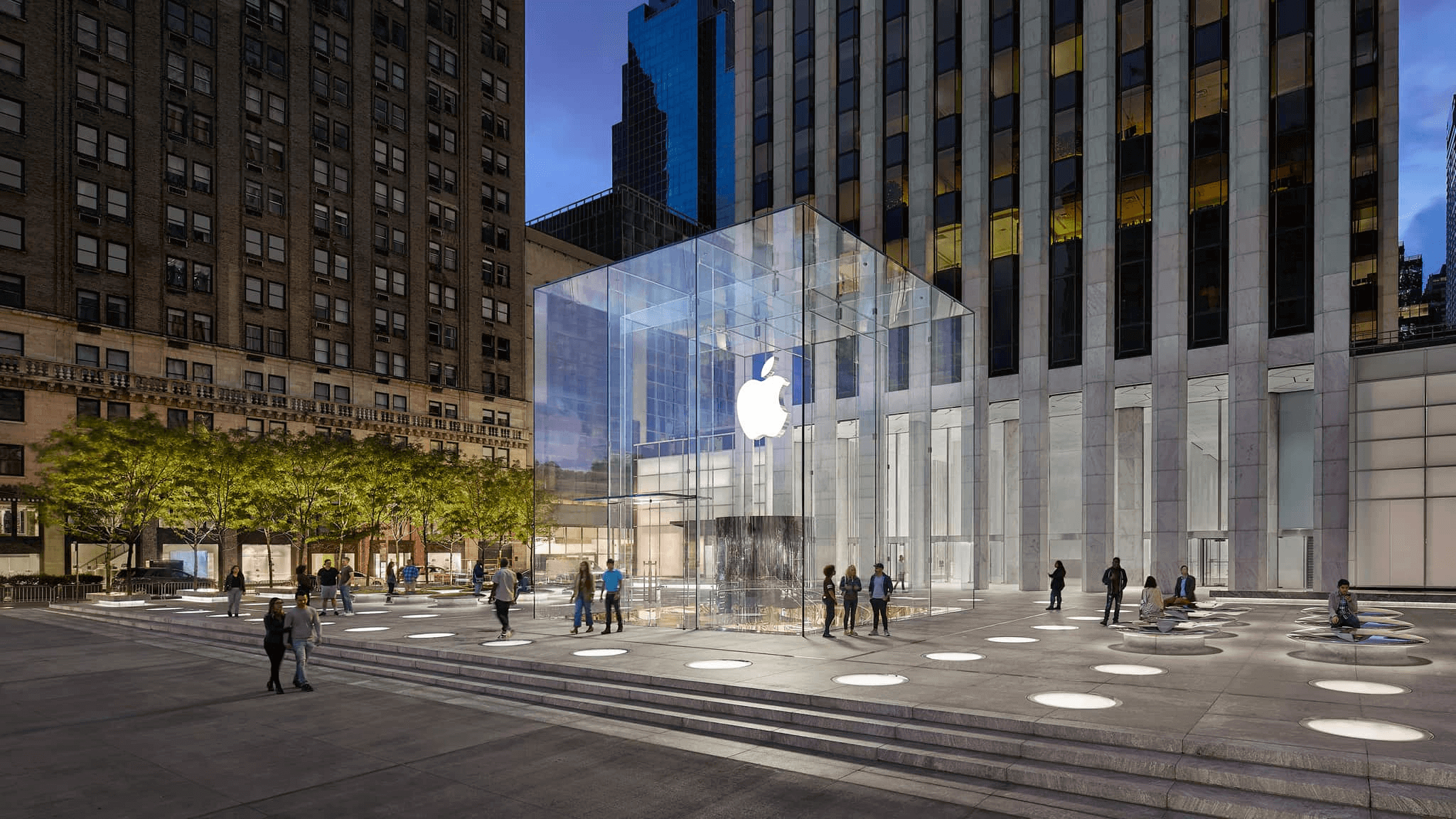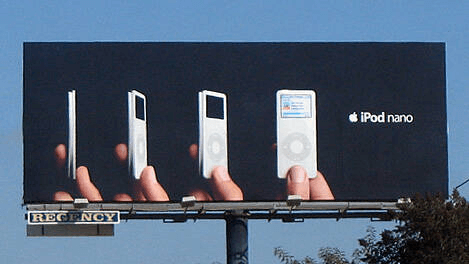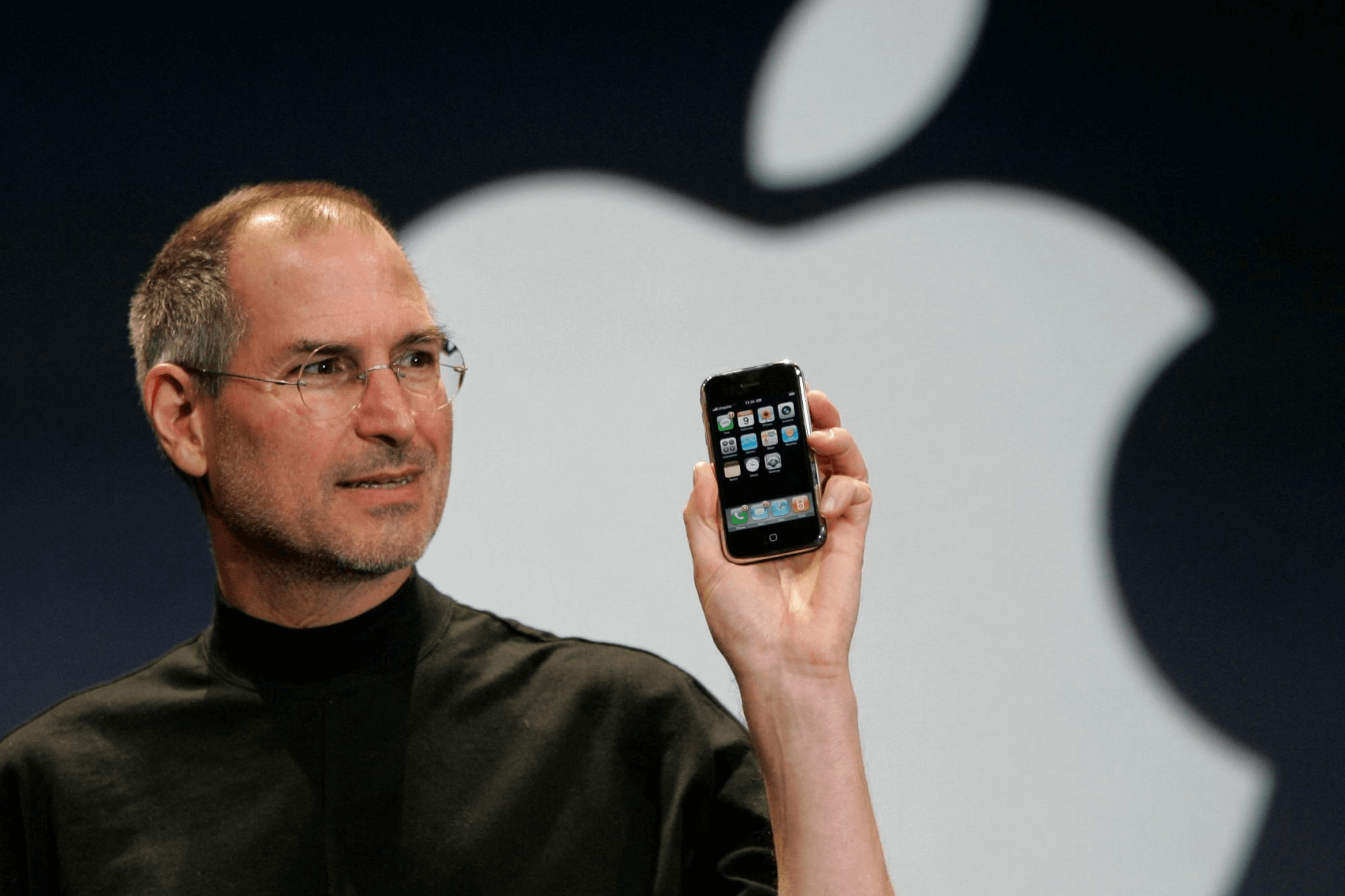Introduction
Apple Inc. is well traced from 1976 by three friends namely Steve Jobs, Steve Wozniak, and Ronald Wayne. Apple which is in the consumer electronics industry has developed many revolutionary products such as apple iPhone, iPad and Mac computers (The Founding of Apple Computer, Inc., 2023). Apple finally achieved the $3 trillion Market capitalization in the global Market in 2023, which also shows the influence of the company in the tech Industry. However, throughout the years, Apple has diversified its corporation's production in various computerized divisions including hardware, software, and its other divisions that includes iCloud, music application, and the store for applications.
Marketing is operationally important for Apple, being an essential element of its strategic model, a tool to maintain and strengthen the customer base, and a way to develop new technology products (Movahed et al., 2024). It is for this reason that has placed it in a vantage position to make a number of strategic marketing decision, this paper aims to explain how Apple as a market leader utilizes the major strategic marketing concepts such as 4Ps to satisfy the needs of consumers.
In addition, the report will also evaluate the strategic logic of Apple's marketing strategy emphasizing on the company's product differentiation and market penetration. The evaluation will also focus on the concept of segmentation, targeting and positioning of the Apple Corporation with regard to the population demographics and the market positioning of the firm. Through analyzing these aspects, the present report will give the information about the strategy of Apple's marketing and its consistent profitability in the global environment.
 Figure 1: Steve Jobs, Steve Wozniak, and Ronald Wayne
Figure 1: Steve Jobs, Steve Wozniak, and Ronald Wayne
Key Marketing Principles
The four P's (Product, Place, Price and Promotion), brand equity, customer relationship management and consumer behaviour form some of the strategic marketing concepts that guide marketing in Apple Inc. It is impartible for any company local or international to understand how Apple has become an international entity revered in the technology industry.
1. Product Strategy: Innovation and Design
The strategic positioning based in Apple centred on prototype and slender design of its product. The organization has continued to launch revolutionary products for example iPhone, iPad, MacBook, and the Apple Watch. The total sales revenue of the products of Apple stood at $394.3 billion in 2022, about 50% of which were generated through the sales of iPhone (Apple Reports Fourth Quarter Results, 2022). This is an indication of the fact that the company has been concentrating on production and sale of quality and versatile products that address the changing demands of consumers.
Furthermore, Apple focuses on increasing the first-generation product's simplicity and usability while paying great attention to aesthetics. The company also deployed the principles of design thinking in its products' development to provide functional, good looking, and intuitive products thus enhancing the company's brand image as a premium brand.
2. Price Strategy: Premium Pricing
Apple has premium pricing policy and targets its products as a luxury product line with higher prices in relation to the competitors (Xu et al., 2024). The logic of this price is to ensure that the value that comes along with innovation, quality, and relative customer service that Apple provides is duly captured. For instance, iPhone models have been observed to be more expensive compared to Android devices; however, Apple experiences a steady market demand because of the iPhone's brand identity and product differentiation.
Currently, the median price for an iPhone is about $800, which is much more expensive than the average price for other branding's smartphones (Best iPhone in 2025: Here's Which Apple Phone You Should Buy, 2025). This not only embodies the characteristic of their high-quality design and operation of Apple's products, but also strengthens the construction of its premium brand image.
3. Place Strategy: Global Distribution Channels
Regarding Apple's place strategy, the main emphasis is made on creating a vast network of distributors for its gadgets. US business selling point include Apple Retail Stores, online stores, and through affiliated third-party retailers. Apple owns and manages more than 500 stores in the world, and in the year 2022 its online sales were near about $56.50 billion of the total revenue (E-commerce net sales of apple.com worldwide from 2014 to 2023, 2024).
As for the flagship Apple Stores, such as those located in New York and London, Apple also uses such stores as advertising means. These stores are not only the place where customers could buy something but offer them to touch the Apple result in person. In addition, this website is designed to be easy to use by both male and female consumers in navigating from the Apple Store Home Page and reaching the checkout page for the item of their choice while enjoying great customer service.
 Figure 2: Apple Fifth Avenue
Figure 2: Apple Fifth Avenue
4. Promotion Mix: Brand Loyalty and Advertisement
Main elements of the Apple's promotion mix are promotional products and personal selling sustained by modern approaches such as word-of-mouth communications (Berger, 2024). The advertisements that has been associated with the ‘Slim' logo and the visuals that have associated with the company also support these points and improve the brand image. Thus, having spent about $1.8 billion on advertising in 2022 it is undeniable that Apple invests quite a small percentage of its revenue in advertising, yet, it is apparent that company aims for keeping a dominant position in the market.
 Figure 3: Apple ‘Slim' advertisement
Figure 3: Apple ‘Slim' advertisement
Marketing support for Apple is provided by the loyal customer base, which is one of the most active in the technological sector. Customers in this category also retain their loyalty to the company since many iPhone users upgrade their current models to better versions every year.
5. Brand Equity: Building of Strong Brand
Apple has developed one of the most recognizable brands on the planet. According to Interbrand, in 2022 the company ranked apple as the most valuable brand in the world and it was valued at over $350 billion (Interbrand releases Best Global Brands 2022, 2022). This strategy has helped the company enhance brand equity through a proper display of a quality brand image, through the use of technology, and through a proper delivery of excellent customer service.
Apple itself is a company that associated with innovative, quality and luxury products which are similar to the target market. Perhaps, the most important achievement of the company is the combination of an emotional appeal to the consumers along with a blend of user experience with a focus on customer satisfaction as the major key points of marketing strategies.
6. Consumer Behaviour: Understanding Customer Needs
The other key aspect of the marketing mix that Apple has well embraced is the market consumption force. The buying organization must constantly invest in research to understand the customers' needs and what is trending in the market. This results in Apple's ability to create devices, gadgets and services that are fulfilling to its target customers. For instance, the Apple AirPods which were launched in 2016 fulfilled the market's wireless earphones niche while the Apple Fitness+ service covers the fitness and wellness niche that has slowly becoming popular over the years.
Figure 4: Apple Fitness+ service
Appraisal of Marketing Decisions
There are certain strategic marketing decisions which Apple Inc. has taken in its journey which have vowed to be effective for the company. These decisions are made based on sound marketing concepts with regard to Apple brand essence of innovation, quality and customer loyalty. Below is the detailed evaluation of some of the most crucial marketing decisions made by Apple that will be accompanied with the rationale for each decision and the overall success of the decision.
1. Product Innovation and Diversification
This is one of the greatest marketing strategies that Apple has employed in the technical innovation and expansion of its products (Ma et al., 2024). Such a strategy has given the likes of iPhone, iPad, and Apple Watch as results. In 2007, the introduction of the first iPhone to the society and the market, changed the mobile phone industry by making this company the leader in the smartphone market. That was done to meet the increasing need for the smartphones that would have better organic and touch interfaces as well as the state of the art functionalities. By the year 2022, the iPhone has been contributing almost 50% of the overall sales of Apple, this being evident of how this decision was a success.
 Figure 5: In 2007, the introduction of the first iPhone
Figure 5: In 2007, the introduction of the first iPhone
Besides, over the past years, Apple focused on wearables, services including Apple Watch, Apple Music, and iCloud which remained sources of the company's revenues growth. The decision to extend its business into services was all the more important given that the market for mobile phones has shifted towards smart phones. Today, the Services division generates seventy-eight billion dollars of revenue proving that Apple's diversification was and remains to be correct to expand in other sectors as well as services.
2. Premium Pricing Strategy
Another marketing strategy that has supported Apple's brand image as a luxury company that deals in high-end tech products is the company's decision on the premium pricing of its products (Neglur and Rajeswari, 2024). Although the firm choses to set high prices that are in fact higher than those set by most of the competitors, the company has been in a position to defend this decision through the unique designs of its products as well as the quality materials used in its products and good customer service. For instance, iPhone has over the years been more expensive than other phones in the market; however, the firm continues to experience high sales because of brand association and quality attributes of the OYS.
However, the strategy of premium pricing has some limitations as well, especially for the countries where price sensitivity of the consumers is relatively high. To address this, Apple unveiled iPhone SE, a cheaper product than iPad Air but with the image of the principal product. This particular decision of Apple proved that the company knows how to enter new segment successfully, without compromising its brand image.
3. Global Expansion and Distribution Strategy
Another key marketing decision has been the global expansion of its own stores through the Apple Stores as well as having a good number of online stores (Zhao, 2024). The company has over 500 apple stores globally with some of the mega stores in New York, Tokyo, and London. These outlets are not only selling points but also some central marketing communications since they offer the consumer an excellent preview of Apple products. The accessibility and relationships with third-party retailers guarantee Apple's enormous reach worldwide concerning its online store and products.
This distribution strategy has been very efficient for the company in ensuring adequate visibility and access to the markets. During 2022, for instance, the sales through the internet channels were at about 14.3% of the company's overall revenue to underlining the significance of the diversified approach to distribution.
Segmentation, Targeting, and Positioning (STP)
Table 1: STP Analysis of Apple
|
STP Component |
Details |
|
Segmentation
|
Apple uses various segmentation strategies to address different customer needs. |
|
Demographic Segmentation |
Apple targets high-income consumers, particularly professionals, students, and tech enthusiasts. For example, the iPhone is marketed as a premium product that appeals to people with higher disposable income. |
|
Psychographic Segmentation |
Apple appeals to consumers with a lifestyle focus, particularly those who value innovation, design, status, and ease of use. Apple positions itself as a brand for individuals who appreciate modern technology and sleek aesthetics. |
|
Behavioural Segmentation |
Apple targets customers based on their purchasing behaviour, such as early adopters who seek the latest technology and loyal customers who regularly upgrade their devices. There is also segmentation carried out according the usage of the products such as the power users such as the professional Apple users and the occasional user. |
|
Geographic Segmentation |
Geographical division is the key in Apple's market segmentation strategy where the company provides products according to the geographical locality (He, 2024). For instance, a new iPhone model is more expensive in the United States and Europe, but there are cheaper smartphones, for example, iPhone SE, intended for the Indian or Chinese market. |
|
Targeting
|
Apple uses a differentiated marketing strategy, targeting several key segments: |
|
High-Income Professionals |
Apple targets professionals who value performance, design, and seamless integration across devices. This includes individuals working in creative industries, business executives, and tech enthusiasts (Nilplengsang and Pankham, 2024). |
|
Students and Young Adults |
Young adults are targeted with gadgets such as MacBook Air and iPhone SE, Apple products are available at discounted rates to students educating institutions and giving out credit facilities to income flexibility. |
|
Tech-Savvy Consumers |
The target audience includes those individuals who appreciate innovation, the latest technology, and the newest additions like the latest iPhone, the Apple Watch, or the AirPods. |
|
Positioning
|
Apple's positioning strategy is centred on offering premium, innovative, and user-friendly products that provide an exceptional customer experience. Key aspects of Apple's positioning include: |
|
Premium and Exclusive |
Apple targets to provide only the best products to its market - their products can be considered as high end. This is well supported by its pricing aspects, the stylish and minimalist design and choice of materials to incorporate. |
|
Innovation |
Apple is positioned as a pioneer of innovation, constantly introducing new technology that improves customers' lives. Examples include Face ID, Apple Pay, and the seamless integration of hardware and software across its ecosystem. |
|
Lifestyle Brand |
Apple emphasizes its brand as a lifestyle choice, with its products seen as a symbol of modernity, creativity, and exclusivity. This positioning appeals to customers who not only want functional products but also an experience that reflects their values and lifestyle. |
Application of Marketing Models/Theories
Several marketing models and theories support Apple's marketing strategy as follows. Two of the most popular models include the Ansoff Matrix and the BCG Matrix, which will enable Apple to plan for its growth and manage its products correctly.
Ansoff Matrix
The Ansoff Matrix is a strategy that is beneficial in developing the strategies of growth for a firm. They include the Market Penetration, Product Development, Market Development, and Diversification.
- Market Penetration: Apple has also achieved market penetration regarding already existing goods as the iPhone and getting hold of new customers by offering new releases and outlets online and through retail shops (Chen, 2024).
- Key Strategies: innovation is another strategy that the firm uses to create new products like Apple Watch, AirPods, and iPad as well as to expand product line to fit the clients' new needs.
- Product Development: Apple's launches new products that includes the iPhone SE that is aimed at those markets like India and China with affordability considerations.
- Horizontal: Apple enters markets related to its existing ones through the addition of such categories as music streaming service, cloud storage and streaming service, and video streaming service.
BCG Matrix
Apple uses the BCG Matrix to organize its products by the growth rate and market share which divides them to Stars, Cash Cows, Question Marks, and Dogs.
Table 2: BCG matrix
|
BCG Matrix |
Product |
Market Share |
Market Growth |
Strategy |
|
Stars |
iPhone |
High |
High |
Invest in markets to retain its dominant position in the market to ensure a constant supply of demand for its products. |
|
Cash Cows |
iMac, MacBook |
High |
Low |
Maximize revenue with minimal investment. |
|
Question Marks |
Apple TV+ |
Low |
High |
Grow and expand to gain and expand market share. |
|
Dogs |
iPod |
Low |
Low |
Phase out or discontinue. |
Porter's Generic Strategies (Cost Leadership, Differentiation, Focus)
Porter in his Generic Strategies primarily described three major types of strategic positions that can be taken in the market: Cost Leadership, Differentiation and Focus.
- Cost Leadership: This strategy aims at achieving the lowest cost in the industry through lower cost producing, hence being able to prise lower than its rivals yet remain profitable (Kissinger, 2024). Cost leadership is not one of the Apple's guiding marketing management principles, although it can use the appropriate price segment when necessary and offer a relatively affordable iPhone SE with most of the essential accessories.
- Differentiation: Apple currently employs the differentiation strategy where it seeks to develop products that are technologically, design-wise as well as usability wise, superior to that of its competitors. Products such as iPhone, MacBook, and Apple Watch are built as premium and innovative, thus customers are dedicated to buy only Apple gadgets and the company can set high prices for them.
- Focus: Another level of strategic business unit approach that Apple uses is the focus strategy, whereby it offers its technology products and services to distinct segment markets like tech-savvy consumers, working class, and well-endowed consumers in the society.
Critical Discussion of Apple's Marketing Strategy
Table 3: SWOT analysis
|
Aspect |
Strengths |
Weaknesses |
Opportunities |
Threats |
|
Product Innovation |
Constant innovation with products like iPhone, iPad, Apple Watch (Mirzayev, 2023). |
High reliance on a few key products (e.g., iPhone) for revenue. |
Entering into the new product divisions of augmented reality and electrical cars. |
Possible over-saturation of certain markets that will hinder growth of the same markets in the future. |
|
Brand Loyalty and Image |
Strong emotional connection with customers. For apple, it seems to be viewed more as a premium and an innovative style brand. |
Price can be considered an important reason for which brand interpretation can be revolting to some people. |
Expanding its appeal in developing markets by having options such as the iPhone SE at a lower price point. |
Increasing competition from brands offering similar features at lower prices (e.g., Samsung, Huawei). |
|
Premium Pricing Strategy |
It's justified by improving product quality and the level of innovation as well as by increasing customers' satisfaction. |
They are closely relating to decision making in countries where prices are sensitive, particularly in the emerging economies (Peng, 2023). |
Bring more products within the price-sensitive range to expand the target market niche without degrading the brand's image. |
They are the following factors which have impacted on the purchasing power of the inhabitants in the core markets: Recession. |
|
Retail and Distribution |
Excellent retail brand communication established by the actual store or micro store, called Apple Stores that are geared towards improving the appeal to the consumers. |
Limited reliance in retail shops which can be expensive when running due to incessant rental costs. |
Increase the availability of the services online and third-party platforms to bring growth and decrease expenditure. |
Virtual shopping may dematerialize the physical stores as a medium of selling goods. |
|
Customer-Centric Approach |
Cohere to also make sure that the delivery of the customer experiences is like services and across devices is smooth and integrated. |
Safari may be criticized for being closed platform which does not allow much freedom to the consumers and interconnectivity. |
They have to launch new services such as new Apple TVs, expanding iCloud as the company looks to reduce sole reliance on hardware sales. |
In entertainment and channels app markets competition is very high, for example in streaming services like Netflix, cloud service providers, etc. |
|
Global Expansion |
High market coverage worldwide, albeit, the focus is made on the premium segment. |
Pricing the goods and services to be introduced in the emerging markets is proving to be a major issue due to the several fixes that may come about. |
Expand on the emerging markets based product and service line up that include the iPhone SE Iowa, which are affordable. |
They include regulatory factors and tariffs that impact on international trade. |
Conclusion
In conclusion, it can be ascertained that the strategies of marketing applied by Apple Inc have been immensely effective for the formation of its business image as a technological giant. In this case, market competition is key to impacting innovation and pricing strategies for products as implemented by apple: product innovation, high price control, tremendous loyalty, and integration of the client experience. The threats include a limited number of bestselling products and pricing problem in emergent markets, yet Apple has the potential to diversify into new product segment and countries. If these weaknesses are dealt with, or the company is able to adjust to these threats, then it will be possible to further enhance its strategic position and ensure long-term profit making.
To get more details about online assignment help meet our experts.
References
Books and Journals
Berger, J. (2024) ‘What Gets Shared, and Why? Interpersonal Communication and Word of Mouth', Annual Review of Psychology, 76.
Chen, Z. (2024, September) ‘Business Strategy Analysis: Evidence on Apple Inc.', in Proceedings of the 2024 4th International Conference on Enterprise Management and Economic Development (ICEMED 2024), p. 104. Springer Nature.
He, Z. (2024) ‘Analysis of Apple's Marketing Strategy: Strengths, Challenges, and Future Directions', in SHS Web of Conferences, Vol. 207, p. 01020. EDP Sciences.
Kissinger, H. (2024) Leadership: Six studies in world strategy. Penguin Group.
Ma, S., Tian, G., Cheng, X. and Li, W. (2024) ‘A Study of Product Diversification in Information Technology Industry', in 2024 7th International Conference on Data Science and Information Technology (DSIT), pp. 1-6. IEEE.
Mirzayev, A. (2023) ‘Historical development of product innovation and innovation timeline of Apple Inc.'
Movahed, A.B., Movahed, A.B. and Nozari, H. (2024) ‘Opportunities and challenges of marketing 5.0', Smart and Sustainable Interactive Marketing, pp. 1-21.
Neglur, I.S. and Rajeswari, P.S. (2024) ‘Case study Apple: Exploring the effects of brand power through nudge theory', Journal of Information Technology Teaching Cases, p. 20438869241241086.
Nilplengsang, Y. and Pankham, S. (2024) ‘Beyond STP Marketing Strategy for Online Service Businesses', Revista de Gestão Social e Ambiental, 18(6), pp. 1-26.
Peng, J. (2023) ‘Research on High Pricing Smartphone', Advances in Economics, Management and Political Sciences, 18, pp. 360-363.
Xu, C., Zhang, B. and Yang, H. (2024) ‘Premium pricing and capacity rationing for advance selling with consumers regret', Journal of Retailing and Consumer Services, 81, p. 104021.
Zhao, W. (2024) ‘Strategic Innovations in Apple's Supply Chain Management: Objectives, Methods, and Strategies for Navigating Global Market Challenges', Advances in Economics, Management and Political Sciences, 113, pp. 9-16.


 Company
Company
















